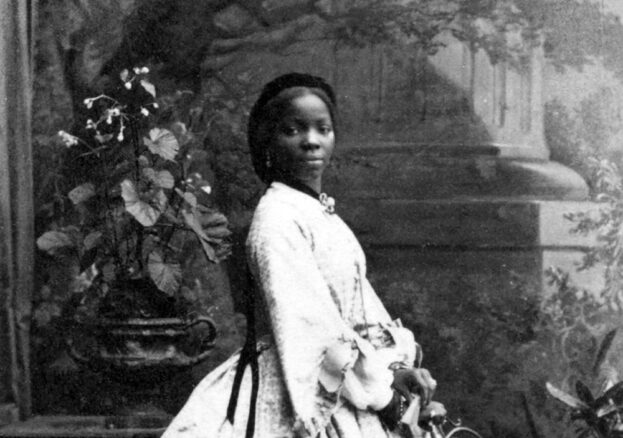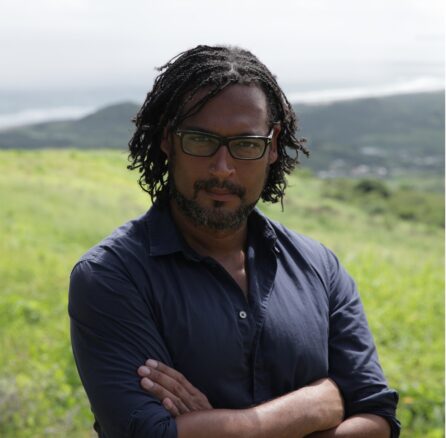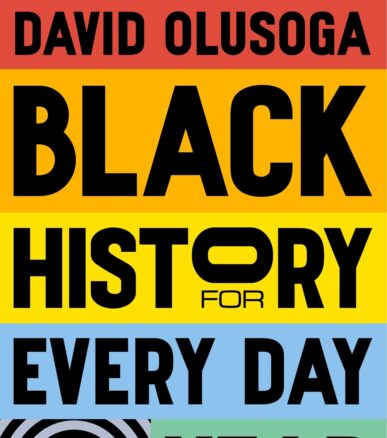
Some people from the past lived lives so unlikely that even when the documentary evidence is in front of you, it is difficult to believe your eyes. Sarah Forbes Bonetta was an enslaved child, imprisoned in the court of an infamous slave-trading king in West Africa. Then, in 1850, she was given to a British naval officer as a gift for Queen Victoria. Brought to Britain Sarah met the Queen, who helped arrange for her to be cared for and educated. Sarah eventually got married and had a daughter of her own, Victoria Davies, who became the God-daughter of Queen Victoria. Sarah’s story is so remarkable that until recently even some of her own descendants struggled to believe it. When the elderly members of the family told stories of Sahara and Victoria the younger members presumed they were just exaggerated family legends.

In May 1850, an officer in the British Navy, Captain Frederick Forbes, visited the court of King Ghezo of Dahomey in West Africa. Forbes’s mission was to persuade King Ghezo to abandon the trade in enslaved people, even though earlier attempts with similar objectives had failed. Forbes brought letters to King Ghezo that detailed Britain’s opposition to the slave trade, including a personal letter of opposition from Queen Victoria, who also sent gifts of silks and cloths.
King Ghezo refused to abandon the slave trade, reminding Forbes that the British had in the past traded in enslaved people. As was the custom, the King also gave Forbes gifts to give to Queen Victoria, and Forbes listed the gifts in his diary: they included expensive cloth, a footstool, cowrie shells (which were valuable in Africa) and a barrel of rum. There was also what Forbes described in his diary as ‘a captive girl’. The girl, who was probably seven or eight, was enslaved, and had been captured around two years earlier during a war in which her parents had died. Forbes named her Sara Forbes Bonetta, after himself and his ship, the HMS Bonetta. The sailors on the ship called her ‘Sally’.
When the HMS Bonetta arrived back in Britain, Forbes contacted Queen Victoria and the Queen agreed to pay for Sara to go to school and to make sure she was cared for. Queen Victoria also requested that ‘Sally’ be brought to Windsor Castle to meet her. So, on 9 November 1850, the little girl made her first appearance at court, and her first entry in the
“We came home, found Albert still there, waiting for Capt. Forbes and a poor little negro, girl, whom he brought back from the King of Dahomey, her parents and all her relatives having been sacrificed. Capt. Forbes saved her life, by asking for her as a present … She is 7 years old, sharp and intelligent, and speaks English. She was dressed as any other girl.”
Sara Forbes Bonetta’s life was transformed by the Queen’s willingness to draw her into the extended circle of her court and provide her with an excellent education. But as a Black child, a former slave, thrust into the heart of Victorian Britain’s elite, her life story was also buffeted and shaped by the profound contradictions and confusion about race that the Queen and most of her subjects shared in the middle decades of the 19th century. One idea that was common in Britain at the time was that the cold British climate was dangerous to the health of Black people, and so in January 1851 Sara was sent to live in Sierra Leone, then a British colony, for her own safety.
After a few years Sara returned to England, and in December 1855 again appears in Queen Victoria’s diary.
“Saw Sally Forbes, the negro girl whom I have had educated: she is immensely grown and has a nice slim figure.”
Three years later Sara was invited to be a guest at the wedding of the Queen’s eldest daughter, who was also called Victoria. In 1862 Sara was living in Brighton under the care of Miss Sophia Welsh, when a thirty-three-year-old West African businessman, named James Pinson Labulo Davies took an interest in her. He was from Sierra Leone and they had been introduced there some years before, when Sara was a child. He came to visit Sara in Brighton and declared a wish to marry her. Aged nineteen, Sara seems not to have been enthusiastic about this plan, but Queen Victoria approved of Mr Davies and in August they were married. When she signed her marriage certificate she gave her name as Sara but also included the African name given by her parents – Ina.
Their wedding was a lavish affair and became a big story in the newspapers. Hundreds of people came out on the streets of Brighton on the day to cheer, and reports of their wedding appeared in hundreds of newspapers in Britain and all over the British Empire.
On 15 September 1862, shortly after their wedding, Sara and James attended the photograph phic studio of Camille Silvy, who was famous for taking expensive photographs of the rich and famous. The photographer captured Sara and James, in fine clothes, posed like other high society Victorians of the day.
Not long after, the couple travelled back to West Africa where, in 1863, their first child was born. They named her Victoria, after the Queen, who became her godmother. Sara took her daughter to Britain and introduced her to the Queen on 9 December 1867. In her diary, Queen Victoria described Sara’s daughter as ‘aged four, a lively intelligent child, with big melancholy eyes’. When little Victoria was christened the Queen sent her new goddaughter a gold cup on which was inscribed these words:
“To Victoria Davies, from her godmother, Victoria, Queen of Great Britain and Ireland, 1863.”
In the 1870s Sara and James had two more children; Arthur, who was born in 1871 and Stella, born in 1873. In 1880 Sara caught tuberculosis and died, aged just thirty-seven. Queen Victoria continued to support her goddaughter Victoria and paid for her to go to school at Cheltenham Ladies’ College. Today, the descendants of Sara Forbes Bonetta live in Britain, Nigeria and Sierra Leone.
David Olusoga is a British historian, broadcaster, and author known for his exploration of race and empire. His upcoming book, Black History for Every Day of the Year (co-authored with Yinka Olusoga and illustrated by Kemi Olusoga, due for release in the UK on 12th September 2024), continues to shed light on pivotal but often overlooked historical contributions. Olusoga’s insightful documentaries and writings have made significant contributions to our understanding of historical injustices and racial issues.

